Calibration Services
Acoustics, Ultrasound and Vibration: Sound Source, Ear Simulator, Tympanometer, Hearing Aid Analyzer, Otoacoustic Emissions Analyzer
Type 1 Ear Simulators
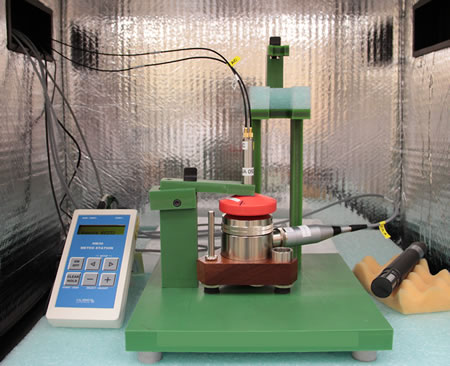 Type 1 Ear Simulator
Type 1 Ear Simulator
An ear simulator is a device incorporating an acoustic coupler and a measurement microphone. The coupler simulates the physical properties of an ear, while the microphone, like a human eardrum, picks up the sound pressure. The type 1 ear simulators are employed for calibration of supra-aural and circumaural earphones used in audiometry and telephonometry whose mechanical dimensions and acoustical transfer impedance characteristics fulfill the requirements stipulated in the International Standard IEC 60318-1. The Acoustics Laboratory of the SCL provides calibration service of type 1 ear simulators on determination of the relative sound pressure response and relative transfer impedance at the frequency range from 40 Hz to 4 kHz according to the international standard.
Type 3.2 Ear Simulators
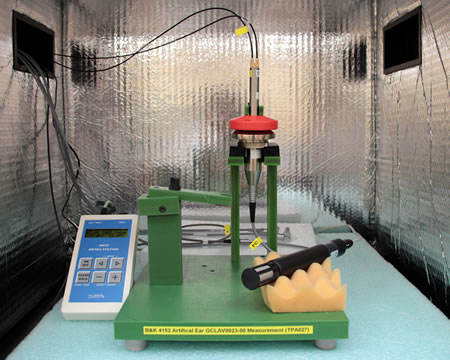 Type 3.2 Ear Simulator
Type 3.2 Ear Simulator
An ear simulator is a device incorporating an acoustic coupler and a measurement microphone. The coupler simulates the physical properties of an ear, while the microphone, like a human eardrum, picks up the sound pressure. The type 3.2 artificial ear equipped with a simplified pinna simulator and is used for standard acoustic receiving path measurement on telephone handsets whose electroacoustic characteristics fulfill the requirements stipulated in the Recommendation ITU-T P.57. The Acoustics Laboratory of the SCL provides calibration service of type 3.2 ear simulators on determination of the relative frequency sensitivity response and acoustic impedance at the frequency range from 40 Hz to 4 kHz according to the international standard.
Mouth Simulators
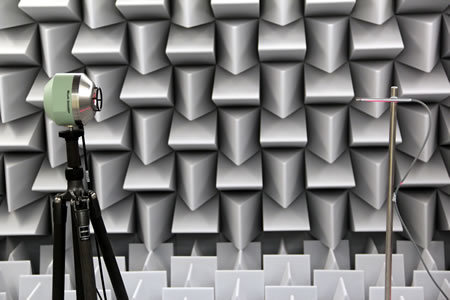 Mouth Simulator
Mouth Simulator
A mouth simulator is an artificial mouth conforming to the Recommendation ITU-T P.51 and is designed for accurate and repeatable electroacoustic measurements. The Acoustics Laboratory of the SCL provides calibration service of mouth simulators on determination of the sound pressure level (SPL) and harmonic distortion at the mouth reference point at the frequency range from 100 Hz to 8 kHz.
Octave Filters
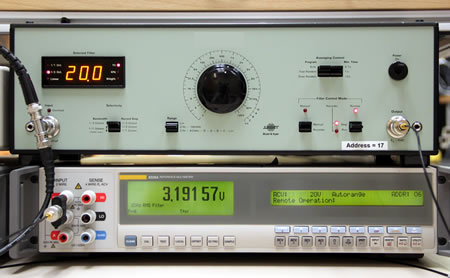 Octave Filter
Octave Filter
An octave filter is used in instrumentation systems for measurement and recording of the frequency spectra of sound, vibration and electroacoustic signals. The Acoustics Laboratory of the SCL provides calibration service of octave filters on determination of the pass-band and stop-band attenuations at the frequency range from 20 Hz to 20 kHz. The acceptance criteria of the test are specified in the International Standard IEC 61260-1.
Tympanometers
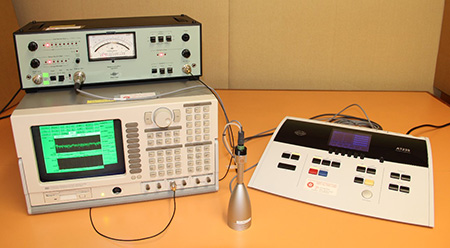 Tympanometers
Tympanometers
A tympanometer is designed for the examination of the condition of the middle ear such as the mobility of the ear drum (tympanic membrane) and the conduction of the ear bones by creating variations of air pressure in the ear canal. A pure tone of frequency from 226 Hz to 1 kHz is generated by the tympanometer into the ear canal, where the sound strikes the ear drum and causes vibration of the middle ear, which results in conscious perception of hearing. Meanwhile, the reflected sound is picked up by the instrument. The sound pressure level of the reflected tone indicates the condition of the middle ear.
The Acoustics Laboratory of the SCL provides calibration services of tympanometers. The following tests are performed in the calibration:
- Frequencies of probe tone,
- Level of probe tone,
- Harmonic distortion of probe tone.
Hearing Aid Analyzers (HAA)
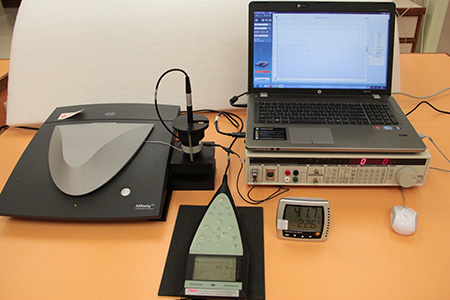 Hearing Aid Analyzers (HAA)
Hearing Aid Analyzers (HAA)
A hearing aid analyzer (HAA) is designed to measure the performance characteristics of air-conduction hearing aids for quality assurance purposes. In general, HAA can perform the following measurements/functions for various kinds of hearing aids: reference test gain, output SPL for 90-dB input SPL (OSPL90), full-on gain, frequency response, harmonic distortion, equivalent input noise level, attack and release time, battery simulator. It consists of (i) a test box, which is designed to isolate unwanted stimuli such as ambient noise; (ii) a sound source which can produce sound pressure levels for the hearing aids; and (iii) a sound pressure level measuring device which can measure the sound pressure levels generated by the sound source for comparison with the output of the hearing aids.
The Acoustics Laboratory of the SCL provides calibration services of hearing aid analyzers for users of the instruments to calibrate the characteristics of the sound source and to characterize the sound pressure level measurement function of a HAA. (Clauses 6.5 (a) and (b) of IEC 60118-7:2005)
Otoacoustic Emissions (OAE) Analyzers
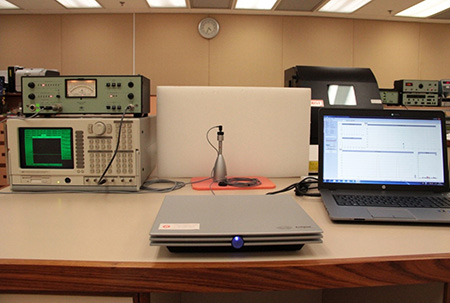 Otoacoustic Emissions (OAE) Analyzers
Otoacoustic Emissions (OAE) Analyzers
Otoacoustic emissions are the sound which is produced when the hair cells of the cochlea response to an acoustic stimulation. By measuring the OAE, it can help to detect sensorineural hearing loss and call attention to hearing disorders affecting the pathway to the inner ear.
Two types of OAE are commonly used in clinical OAE analyzers:
- Transient otoacoustic emissions (TOAEs) or transient evoked otoacoustic emissions (TEOAEs) - Sounds emitted in response to an acoustic stimulus of very short duration such as clicks or tone-bursts,
- The second one is distortion product the otoacoustic emission (DPOAE) - Sounds emitted in response to 2 simultaneous sound of different frequencies.
The Acoustics Laboratory of the SCL provides calibration services of OAE analyzers. The following tests are performed in the calibration:
- Frequencies of stimulus signal,
- Level of stimulus signal,
- Harmonic distortion of stimulus signal.